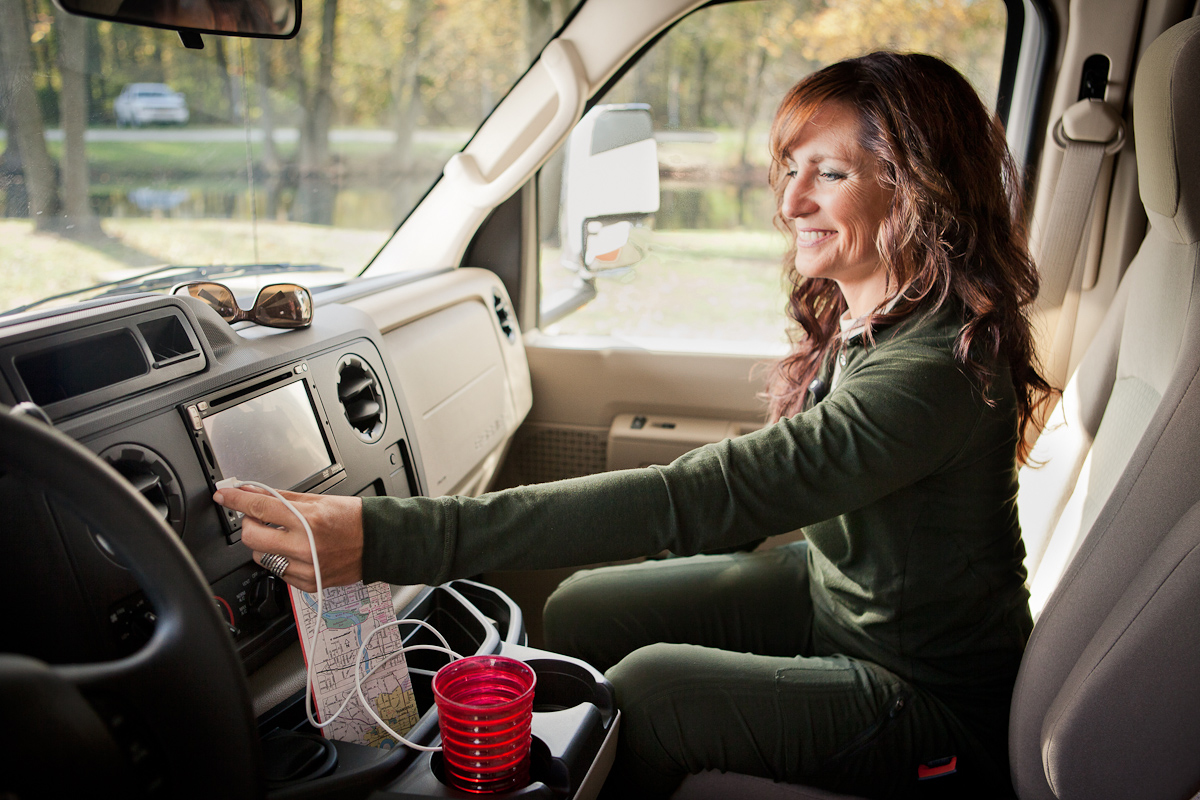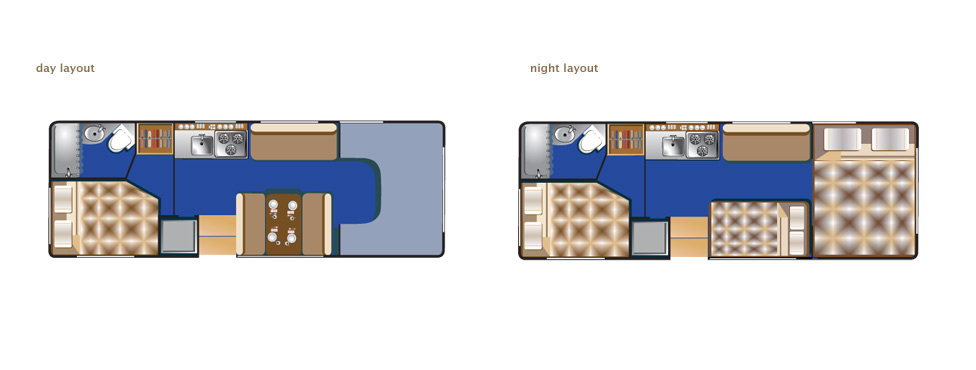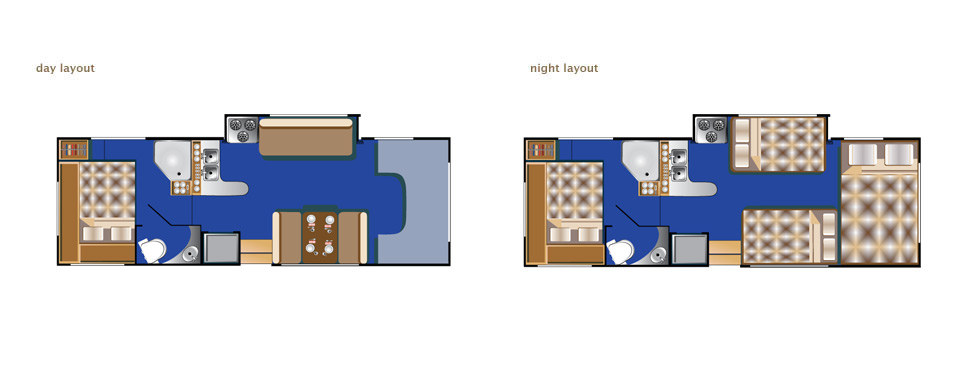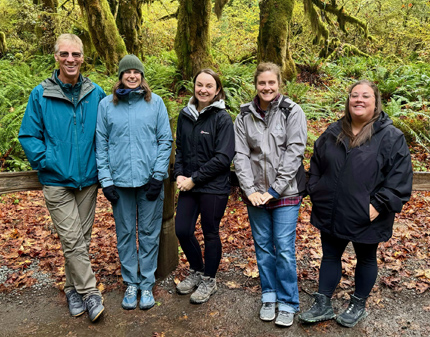
Photo courtesy of GoRVing.com
One of the first things your Trip Consultant will discuss with you is what type and size of RV will suit you best. There are tradeoffs. Larger models have more elbow room, more beds, and more storage space. They are also a little trickier to drive and park. We recommend getting the smallest vehicle that will comfortably accommodate your group. Bigger is not necessarily better.
We use a variety of vehicles from carefully-chosen suppliers to accommodate different needs. Choosing the best RV rental for your vacation involves many variables, and we are here to help you choose the right one. (The information below is representative of typical vehicles in each size range and may not be exactly what you receive.)
The Class C motorhome is the most popular rental RV for many good reasons. Most are built on a Ford E-Series van chassis. You may have driven one of these before. Besides the ubiquitous “15-passenger van”, they are also the foundation for delivery trucks, airport shuttle buses, small moving vans, and ambulances. If you are comfortable driving a full-size SUV or pickup truck, it’s not a very big step up to a Class C motorhome.

Photo courtesy of GoRVing.com
Sleeps from 2-5 in 3 Beds
Our favorite model for couples or small families is a Class C in the 21-28 foot range. These compact rigs are small enough to allow access to the cozy, uncrowded campgrounds we prefer, yet they have the same basic amenities as the larger models. The tradeoff is a little less storage and a master bed situated in a corner with walls surrounding 2 or 3 sides of the bed. In smaller models, you have to climb in over the foot of the bed, and changing sheets can be a chore. Unless you have limited mobility, though, the efficient use of space compared to a walk-around bed makes it a worthwhile compromise.
The relatively short wheelbase simplifies maneuvering in tight spaces, and it sleeps up to 5 people in 3 beds — the master bed at the back, the big loft bed over the cab, and a convertible dinette bed, usually best suited for shorter people.
Sleeps 4-7 in 3-4 Beds
If you have 5 or more passengers, you’ll probably want the additional sofa-bed that comes in most of these longer units. Most have a “real” walk-around bed in the full-width rear bedroom. Because of its length, some smaller campgrounds will be inaccessible, but we take that into consideration when choosing your campsites. Finding a parking place in the supermarket lot in town becomes a little more challenging. Just look near the back of the lot for two vacant head-to-head spaces and pull straight through.





